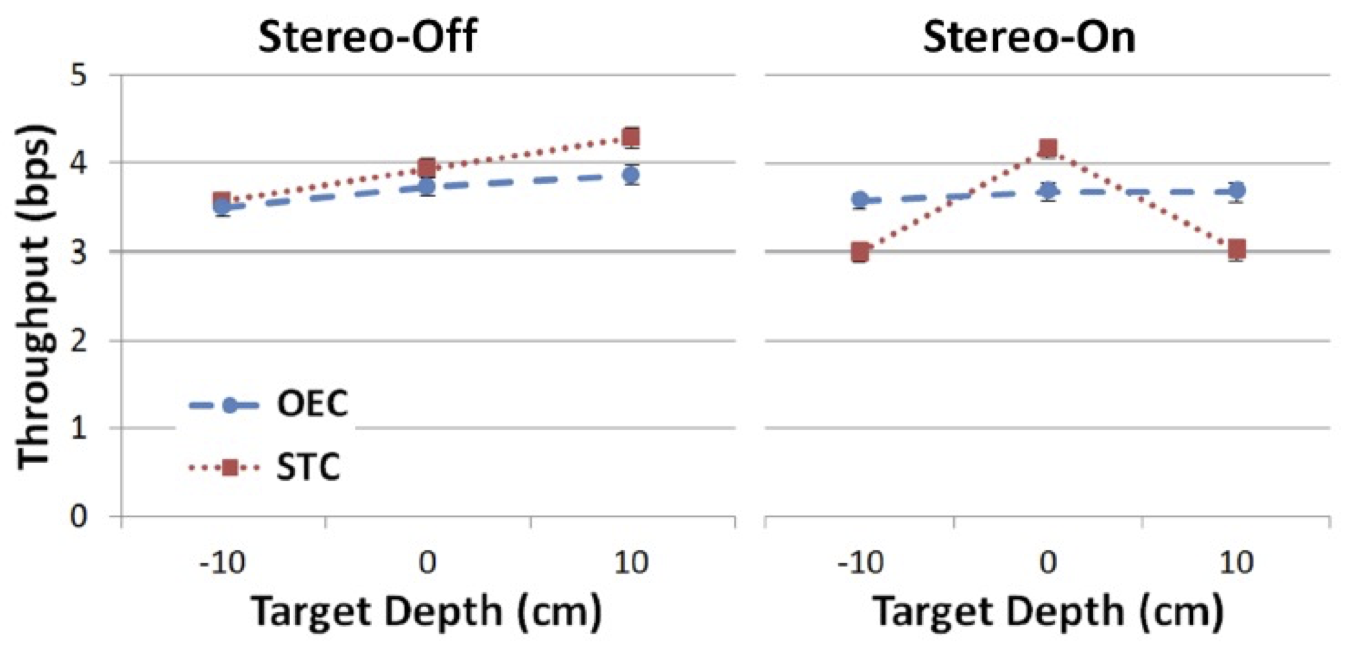
Factors Affecting Mouse-Based 3D Selection in Desktop VR Systems Inproceedings
Robert J. Teather, Wolfgang Stuerzlinger
Abstract:
We present two experiments on mouse-based point selection in a desktop virtual reality system using stereo display and head-tracking. To address potential issues of using a mouse cursor with stereo display, we also evaluate the impact of using a one-eyed (mono) cursor. While a one-eyed cursor visualization eliminates depth conflicts, recent work suggests it offers worse performance than stereo cursors, possibly due to eye discomfort. Our results indicate that presenting the cursor in stereo significantly reduces performance for targets at different depths. The one-eyed cursor eliminates this effect, offering better performance than both screen-plane and geometry-sliding cursors visualized in stereo. However, it also performed slightly worse than stereo cursors in situations without depth conflicts. Our study suggests that this difference is not due exclusively to the relative transparency of such a cursor, hence eye fatigue or similar may be responsible.
